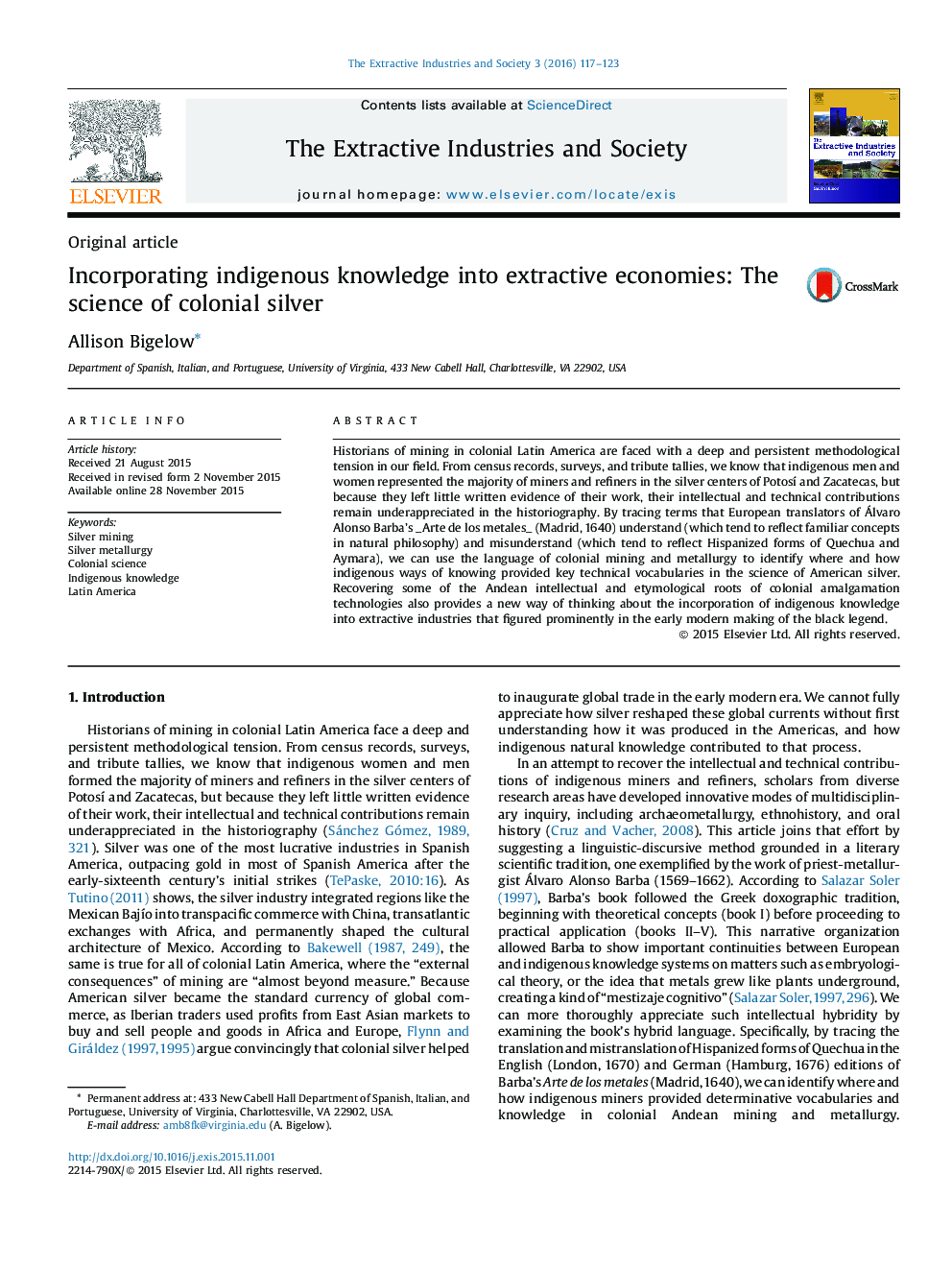| Article ID | Journal | Published Year | Pages | File Type |
|---|---|---|---|---|
| 10502193 | The Extractive Industries and Society | 2016 | 7 Pages |
Abstract
Historians of mining in colonial Latin America are faced with a deep and persistent methodological tension in our field. From census records, surveys, and tribute tallies, we know that indigenous men and women represented the majority of miners and refiners in the silver centers of Potosà and Zacatecas, but because they left little written evidence of their work, their intellectual and technical contributions remain underappreciated in the historiography. By tracing terms that European translators of Álvaro Alonso Barba's _Arte de los metales_ (Madrid, 1640) understand (which tend to reflect familiar concepts in natural philosophy) and misunderstand (which tend to reflect Hispanized forms of Quechua and Aymara), we can use the language of colonial mining and metallurgy to identify where and how indigenous ways of knowing provided key technical vocabularies in the science of American silver. Recovering some of the Andean intellectual and etymological roots of colonial amalgamation technologies also provides a new way of thinking about the incorporation of indigenous knowledge into extractive industries that figured prominently in the early modern making of the black legend.
Keywords
Related Topics
Life Sciences
Environmental Science
Management, Monitoring, Policy and Law
Authors
Allison Bigelow,
